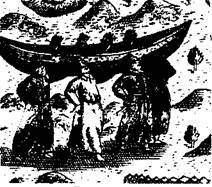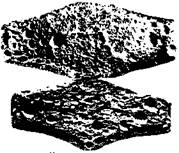home
 Economy Economy
 Books Books
 History of the world economy - Polyak GB History of the world economy - Polyak GB
|
History of the world economy - Polyak GB
13.3. Development of crafts and cities
Craft development
In the eastern Slavs, the craft was separated from agriculture in the 6th-9th centuries. In the era of Kievan Rus there was a real flowering of handicraft production. According to sources, 64 handicraft specialties can be identified: processing of iron, non-ferrous metals, wood, stone, leather and furs, the production of fabrics and clothing, the manufacture of ceramics, jewelry, etc. Only from iron and steel, Old Russian craftsmen manufactured more than 150 kinds of various products .
In Kievan Rus, the division of handicraft production into rural (rural) and urban is noted, which met the specific needs of the rural and urban population in certain tools of labor, household items, etc.
Among the crafts, the processing of iron was particularly important. The raw material for the production of iron was sod, lake and bog ore (containing 20-50% of the metal). The production of iron was based on the cheese-making method, when in the primitive domranitsa in the furnace on the charcoal received the iron. Kritsy then forged to produce iron, suitable for the manufacture of various metal products. The production of iron mainly developed in rural areas, followed by its transportation to other cities and regions. However, some of the old Russian towns also had dominics.
Specialization of crafts by districts is growing. Already in the XII century. The Ustyuzhsky district in the northwest, specializing in foundry production, is allocated, Ovruchsky district in the south-west, famous for the manufacture of slate spindles.
In the countryside, mainly manufactured items for the needs of the agricultural population (sickles, shovels, axes, ploughshare, etc.). More diverse was the city's iron-making industry, which was distinguished by higher technology. Urban artisans made not only agricultural implements, but also various household items, weapons (spears, swords, swords, battle axes, arrows), armor (shields, helmets, chainmail).
In the cities, the technique of jewelry was more complex. Village craftsmen mainly used casting to produce a relatively small circle of jewelry (rings, bracelets, necklaces, pendants, rings, etc.), while in the city they performed more delicate jewelry works: chasing, forging, engraving, mobile, gilding, Filigree, enamel. Archaeological monuments show that many of these types of products in terms of quality and technique exceeded those of Western European artisans.
As a city craft, the production of building and finishing materials - bricks, tiles, tiles, is widely used in the construction of churches, houses and other structures. Until now, the Golden Gate, the St. Sophia Cathedral with its unique mosaics and frescoes, built in 1037, in Novgorod - the Sophia Cathedral, built in 1050, have been preserved in Kiev. At the beginning of the 12th century, Kiev carpenters built a large wooden bridge across the Dnieper.
The social status of artisans divided into several groups: rural artisans - community members, artisans - serfs in monastic, boyar and princely courts, free urban artisans, who were the largest group. To protect their interests, urban artisans united in organizations that were the prototypes of the workshops.
Cities
The intensive process of separation of craft from agriculture led to the concentration in the cities of the mass of artisans who produced goods not only for order, but also for sale.
The very name "city" in Rus means a fortified settlement, a fenced place. However, these city-strongholds actually became cities only when they had a permanent population, when they became centers for the management of the feudal district, the centers of crafts and trade.
According to estimates by Academician MN Tikhomirov from the annals, in the 9th-10th centuries, There were 25 cities in the 11th century. There was another 64, in the XII century. - 135, by the time of the Mongol-Tatar invasion in Russia there were already about 300 cities.
Over time, not only the number of cities changed. The city itself was also changing. Initially, Russian cities (IX-X cc.) Were fortresses. Formation of the city as a center of artisans and traders is only outlined. But already in this period, independent settlements are emerging under its walls. At first they do not belong to the city, but approximately to the end of the X century. Are transformed into a part of it - a pre - urban area or a settlement with a craft and trade population, which by virtue of its occupations does not live on a mountain - a hill where there is a fortress, and below - by the river, on the hem.
Message paths
The main ways of communication in Ancient Rus were water. On the basis of existing water systems, a number of paths arise, which was important both for individual lands in Kievan Rus and for the state as a whole. The most stable routes of communication are formed on the basis of large river systems.
One of the most famous is the water route "from the Varangians to the Greeks", connecting the Baltic Sea with the Black Sea. He stretched across the Russian lands for thousands of kilometers from north to south. Apparently, an early branch of the road "from the Varangians to the Greeks" to the Western Dvina was formed.

Transfer of the boat
By the Dnieper route from Byzantium to Russia were transported expensive fabrics, books, icons, wines, fruits, vegetables and spices, glass and jewelry. From the northern regions they carried along the Dnieper forest, honey, furs, wax, from the Baltic countries - amber, from Scandinavian - crafts and some types of weapons.
The most important Volga route - to the Caspian, the Caucasus and Transcaucasia, to the Arab countries was also lively. The waterway had a land branch, starting from the lands of Volga-Kama Bulgaria and leaving for Central Asia. Furs, wax, honey, linen, linen, silver items, chain mails were exported along the Volga route. To Russia along the Volga were carried expensive oriental fabrics, including "pavoloki" - silk fabrics, precious stones, gold and silver, spices, fruit.
There were other waterways that served both individual small areas and large areas - land.
"Russian Pravda" also testifies to the existence of overland major trade roads - "great hotels". One of such large overland roads led from Kiev to the west via Krakow and further to the Czech Republic - to Prague and to southern Germany to Raffelipttengen and Regensburg. In Regensburg was a special corporation of merchants who traded with Rus.
Trade
The land road connected Kiev with Prykarpattya, where there were salt mines that supplied salt to the South Russian lands.
One of the largest handicraft and shopping centers was Kiev, which numbered 100 thousand inhabitants during its heyday. In Kiev there were eight markets, each of which specialized in the sale of certain goods. Through Kiev passed the waterway "from the Varangians to the Greeks."
The most important trade and craft center was Novgorod. 152 kinds of products made of iron and steel, 205 types of products made of wood, many of which were decorated with intricate carvings - such is the range of artisans' products of ancient Novgorod. And there were so many potters that the whole district of the city was called Goncharny (Lyudin) the end. Fabrics for everyday clothes Rusich were produced in Novgorod. In the XI-XII centuries. These were vertical weaving looms, and at the turn of the 12th-13th centuries. In Novgorod, simultaneously with the West European countries, more productive horizontal machines appeared. Judging by the excavations in Novgorod, various types of leather shoes were made. Novgorod was also famous for its jewelry masters, who used sophisticated techniques to decorate their products: engraving, carved and cloisonne enamel, filigree, granules, gilding, etc.
As already noted, Novgorod was an integral part of the great waterway of antiquity "from the Varangians to the Greeks" - from the Scandinavian countries to Byzantium. Novgorod merchants led a lively trade with Scandinavia, Denmark, the cities of the Hanseatic League.
However, the "overseas" trade was of very limited importance for the country's economy, as it was mainly imported luxury goods consumed by the top feudal lords and clergy. Mainly the products of the fishing industry were exported.
Monetary system
The natural result of the development of trade was the emergence of a monetary system. Initially, the measure of value was cattle, so the money was called cattle. In the period of Kievan Rus there was a monetary unit of kuna, which indicates that once the eastern Slavs measured the cost of marten. Probably, livestock appeared in the southern areas, where cattle breeding was developed, and Kuna - in the northern, where a prominent role belonged to the hunt.
Until the second half of the X century. On the territory of Russia there were circulation of Byzantine and Arab coins, and then Western European coins (German pfennigs, denarii of Hungary, the Czech Republic, etc.). At the end of X - the beginning of XI centuries. The coinage of its own coin begins. Probably, this happened after the official adoption of Christianity in Russia, because on one of the types of silver coins there is an image of Jesus Christ, and on all coins (both gold and silver) the prince with a cross is a symbol of Christianity.
Large payment transactions in Medieval Russia were provided with silver ingots. On the territory of the ancient Russian state ingots of various weight and species were turned, but the so-called Kiev and Novgorod hryvnias had a predominant significance .
The Kiev hryvnas of the 11th-13th centuries. Are cast ingots of hexagonal shape, which had a stable weight of about 160 g. They functioned from the middle of the 11th century. Up to the Mongol-Tatar invasion of almost the entire territory of Kievan Rus, but most of all in the southern regions.

Kyiv Hryvnia
Novgorod hryvnia - ingots had a different form and weight. These are long (14-20 cm) sticks-bars weighing about 200 g, containing a larger epigraphic material - they are often scratched with the names of those for whom they were cast. The structure of the money account, fixed by the long version of the "Russian Truth": 1 hryvnia = 20 nogats = 50 kuns = 150 or 100 vveritsam *.
* Veveritsa - the smallest indivisible monetary unit in Ancient Rus = 1/3 cut = 1/6 kuna.
With the onset of feudal fragmentation, local money-weight systems develop, the market sphere of life is limited by the territory of individual lands.
Questions for repetition
1. Tell us about the formation of the state of Kievan Rus, its population and the taxation system.
2. Describe the process of feudalization in Kievan Rus and the legal norms of that time.
3. How did the main branches of agriculture of Kievan Rus develop?
4. Tell us about the development of crafts and cities.
5. Compare the internal and external trade of Kievan Rus.
6. What are the main stages of the development of the ancient Russian monetary system.


Comments
Commenting on, remember that the content and tone of your message can hurt the feelings of real people, show respect and tolerance to your interlocutors even if you do not share their opinion, your behavior in the conditions of freedom of expression and anonymity provided by the Internet, changes Not only virtual, but also the real world. All comments are hidden from the index, spam is controlled.